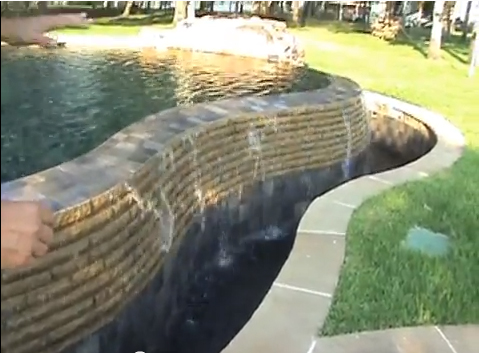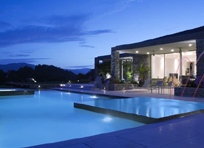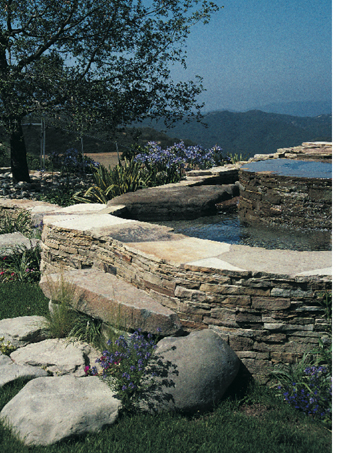infinity edge
In advancing my career as a watershape designer, I've put major stock in education to give me an edge. I've taken multiple courses in computer-assisted design, for instance, along with all sorts of technical-skills classes to keep me up with what's current in the field. But I've noticed as well that the accumulation of experience is a huge additional asset, mainly because it reflects what I've already tried, survived and learned from - but also because having done some of the things I've tackled through the years gives me
Of all the design innovations that have spread through the general watershaping community in the past 20 years or so, I can’t think of any that has captured consumer imaginations as dramatically as have vanishing-edge designs. They rose from minimal presence in the late 1980s to become the most recognizable and popular of all
By Ron Gibbons The wetlands of Long Island provide a natural backdrop for this exquisitely…
We describe them using many terms – as vanishing-edge, infinity-edge, negative-edge, knife-edge, slot-overflow, flooded-deck, gutter or perimeter-overflow pools, among others – but no matter what we call them, all of these watershapes operate on the same basic premise: By moving a sufficient quantity of water from a collection basin or tank to a visible main vessel at a sufficient rate, we can create systems in which
This project is all about making connections – connections between the inside of a home and the outdoors; between surrounding wide-open spaces and an intimate backyard; between the colors of the hillsides and the materials used in crafting the watershape; between the clients’ desire for recreation and their passion for beauty; and between the beauty of nature and the modern, sculptural lines of the design. In style, this freeform, vanishing-edge pool and raised spa are
It’s not unusual for watershapers to have their signatures. For some, these noteworthy effects extend from their educations and personal design preferences, while for others, inspiration comes from distinctive qualities found in local landscapes or from tailoring designs to suit the characters of their clients. In our case, we at Hydroscapes (Fountain Hills, Ariz.) pull on all of the above and more in our design work. Through the years, we’ve done a lot of projects associated with Contemporary-style architecture – a specialty, perhaps, but not what we’d call a signature. This work has led us to invest lots of time in studying modern masters including Frank Lloyd Wright and John Lautner – and, as they did, in learning about Japanese garden design and the work of the great Craftsmen architects such as Greene & Greene. Those influences flow neatly together for us because all of those designers embrace simplicity of line and form as well as elegance in the use of colors and materials. It doesn’t hurt that these legacies suit our personal tastes as a husband-and-wife design team – and it helps even more that a majority of our clients these days seem to start with similar ideas in mind: They want
'I want the house to look as though it is floating on water." That was what architect Victor Canas told me when I was called out to visit this site on the northwestern coast of Costa Rica. It was a brilliant idea, certainly one that befitted the spectacular mountaintop setting and its breathtaking 360-degree views of rugged coastline, forest greenery and assorted perspectives to horizons in all directions. I had the advantage in this case of
As watershapers, we occasionally are given the opportunity to interact with modern architecture in ways that enable us to generate genuine works of art. This trail linking some of today’s most expressive architecture to the reflective and auditory potential of water has been blazed by great designers including John Lautner, Ricardo Legorreta and Luis Barragan. They and their followers have thoroughly explored the geometries, materials and spatial relationships that make up the modern architectural dialogue between structures and water – and the results have often been breathtaking. Almost without exception, their success in these designs is a matter of context and the setting, and as one who has studied their projects for many years, I now have a clearer sense of the excitement they must have felt when things came together and everything about a project was just right. For the project pictured in these pages, a hilltop setting, the contemporary architecture of the home and willing clients set the stage for what is probably





















Losing the Language Wars